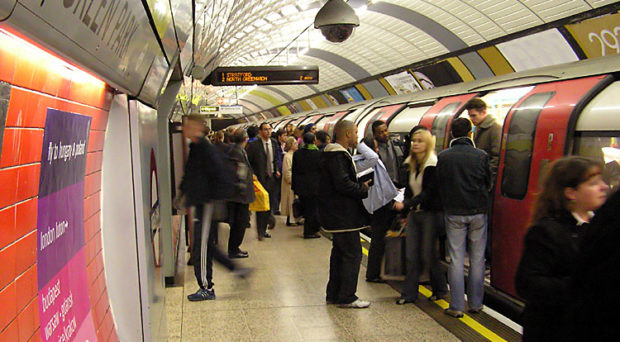
Could you tell us a little about the background of the research? Why did you decide to study the link between public transport use and airborne transmission?
We first created a new mathematical method combining compartmental models analyzing the transmission of infectious diseases with pedestrian models and studied the case of individuals moving in a corridor. We then decided to apply this method to investigate the transmission of generic airborne infection in a specific crowded and confined environment. Because passengers have set trajectories, underground stations can be imagined as long corridors from the entrance point to the platform and, vice versa, from the train to the exit.

How did you come up with the study design of combining oyster card data and Public Health England data? What did you hope to find?
Once we created the theoretical base of the study, we decided to analyse a real scenario: the London Underground. Transport for London (TfL) makes available, under request, a sample of their Oyster Card data. The data is anonymised but reports the entrance and exit stations and times for each individual. This allowed us to map trips across the whole network by creating an algorithm that could infer the time individuals take to traverse the stations at any point during the day.
We hoped to validate this method by finding a correlation between the total number of people entering and exiting the underground and the time taken to walk towards the platform (or towards the exit) i.e. at higher densities, crowds move slower and it takes longer to reach the final destination.
Through this mathematical method, we were first able to infer the times during which each station is most crowded and the maximum time it takes to reach the platform (or the exit), as well as the total number of contacts individuals make while walking inside the stations and throughout their whole trip.
We compared our results to a sample of GP reports of influenza-like illnesses rates (ILI) in London boroughs from Public Health England (PHE).
What did your results show?
Results show that there is a correlation between the use of public transport and ILI rates in London. In particular, in boroughs that have a higher than average number of ILI cases, the number of contacts residents make when travelling is higher. This is because they need to stop multiple times during their trip in order to change lines. On the other hand, people that live in well-connected areas, who are served by more underground lines, make faster trips because they do not have to stop in crowded junctions such as King’s Cross St Pancras or Victoria Station, and thus they get in contact with a smaller number of individuals. These results are in line with other environmental and demographic factors such as age, population density, employment and income.
How do you think your research will impact public transport use and development?
Avoiding travelling during peak hours and limiting the changes of line would reduce the risk of exposure to contagion.
On a public level, flexibility in travelling times and routes is important. Avoiding travelling during peak hours (generally 7:30-9:30 am and 4:30-6:30pm weekdays) and limiting the number of line changes would considerably reduce the number of contacts and, consequently, reduce the risk of exposure to contagion. From a policy-making point of view, this research has the potential to inform future station design, ventilation systems and pedestrian routes.
What do you expect to investigate in the future?
This work constitutes a first step in the analysis of infection transmission in stations and, more generally, public transport hubs. A more comprehensive dataset of ILI cases in London would allow to map level of influenza with higher precision and incorporating aerobiology analysis could improve the fidelity of the model.
Comments